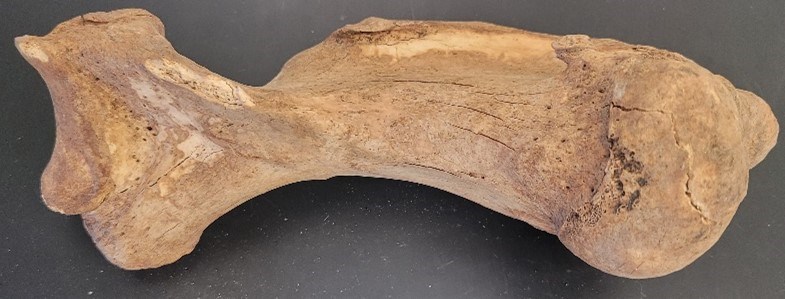April 27, 2023
by Mary Keenan

Our Aleutian Mercury Dynamics research program involves multiple processing steps, performed by scientists from unique fields of study. Below is a video of Dr. Caroline Funk (PI, University at Buffalo collaborative award NSF PLR-1935823) at the Museum of the Aleutians in Unalaska. She is sorting through a bag of archaeological sea mammal bones. These bones were collected during field excavation of middens on Unalaska Island in the 1990s. Our project accessed these faunal materials with permission of the Ounalashka Corporation and the Museum of the Aleutians.
The bones were cleaned and processed by museum professionals immediately after they were excavated.In the video, Funk, an archaeologist who studies Unangax^ history and specializes in faunal analysis, examines faunal materials from archaeological site UNL-050, the Amaknak Bridge site in Unalaska. She is identifying bones from the species of interest in our study and then calculating the minimum number of individual Northern fur seals (Callorhinus ursinus) or Steller sea lions (Eumetopias jubatus) present in each area of the site. Later, she and Dr. Nicole Misarti (UAF) will determine which bones will be sampled for mercury and stable isotope analysis in this project.
In the video, Funk finds elements from an otariid pup: a tibia, ulna, femur, humerus, and mandible.
Do you know where these bones are in a sea lion skeleton? Once you find the correct bone on the skeleton below and click on the dot, the name of the bone will appear.

Sea lion skeleton (Renderhub 3D Modeling)




Images of Otariid bones in MOTA archaeology collections from previously excavated middens on Unalaska. Pictured is an Otariid humerus (top), mandible (second from top), part of a tibia (bottom left), and ulna (bottom right).
Note: No human remains are depicted in the video. The elements present are those of non-human mammals.